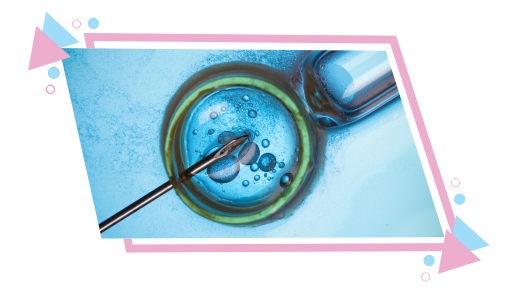ICSI Treatment in Chennai
Services / Intracytoplasmic Sperm Injection (ICSI) Treatment Procedure

Intracytoplasmic Sperm Injection (ICSI) Involves the Injection of Sperm into Eggs Directly. The Egg is Obtained from in Vitro Fertilization (IVF).
Procedure of ICSI
Five Simple Steps to ICSI Include the Following:
(1) The Mature Egg is Kept with a Specialized Pipette.
(2) A Very Delicate, Sharp and Hollow Needle is Wsed to Immobilize and Collect a Single Sperm.
(3) Then, The Needle is Carefully Inserted Through the Eggshell and into the Cytoplasm of the Egg.
(4) Sperm is Injected into the Cytoplasm and the Needle is Carefully Removed.
(5) The Eggs are Checked the Next Day to Detect Evidence of Normal Fertilization.
Once the ICSI steps are complete and fertilization is successful, the embryo transfer procedure is used to physically position the embryo in the woman’s uterus. So it’s about observing the first symptoms of pregnancy. The Fertility Specialist can use a blood test or an ultrasound to determine if the implant and pregnancy have occurred.
Specific Situations Where ICSI Might Be Recommended
ICSI can be recommended when there is a reason to suspect that achieving fertilization can be difficult. ICSI is used more often with couples dealing with Male Infertility Factors. Male Infertility Factors can include one of the following factors: low sperm count, poor sperm motility or movement, poor sperm quality, spermatozoa that do not have the ability to penetrate an egg or Azoospermia.
Azoospermia is a condition in which there are no spermatozoa in the male ejaculate. There are two types of azoospermia: obstructive and non-obstructive.
Obstructive azoospermia can be caused by one of the following:
(1) Previous Vasectomy
(2) Congenital Absence of the VAS
(3) Scars from Previous Infections
Non-obstructive Azoospermia occurs when a defective testicle does not produce spermatozoa. In the case of azoospermia, the likelihood of obtaining usable spermatozoa is low and the possibility of using donor sperm can be considered.
Sperm Retrieval
For men who have Low Sperm Count or low sperm count, sperm can be collected through normal ejaculation. If the man has had a vasectomy, the reversal of microsurgical vasectomy is the most convenient option to restore fertility.
Needle aspiration or microsurgical recovery of spermatozoa are good alternatives when a reversal of competent microsurgical vasectomy has failed, or when a man refuses surgery. Needle aspiration allows doctors to quickly and easily get the right amount of sperm for the ICSI Procedure. A small needle is used to extract the sperm directly from the testicle.
Needle aspiration is a simple procedure performed under sedation with minimal discomfort; however, there is a possibility of pain and swelling later. The sperm obtained from the testicles is only appropriate for ICSI Procedures when the testicular sperm fails to penetrate itself into an egg.
Health Concerns
Studies have been conducted which indicate that the development of children from pregnancies achieved by artificial insemination, and in particular ICSI, may be exposed to an increased risk of some birth defects, such as printing defects. The press refers to the phenomenon in which certain genes function differently depending on whether it is a particular chromosome transmitted by the father or mother.